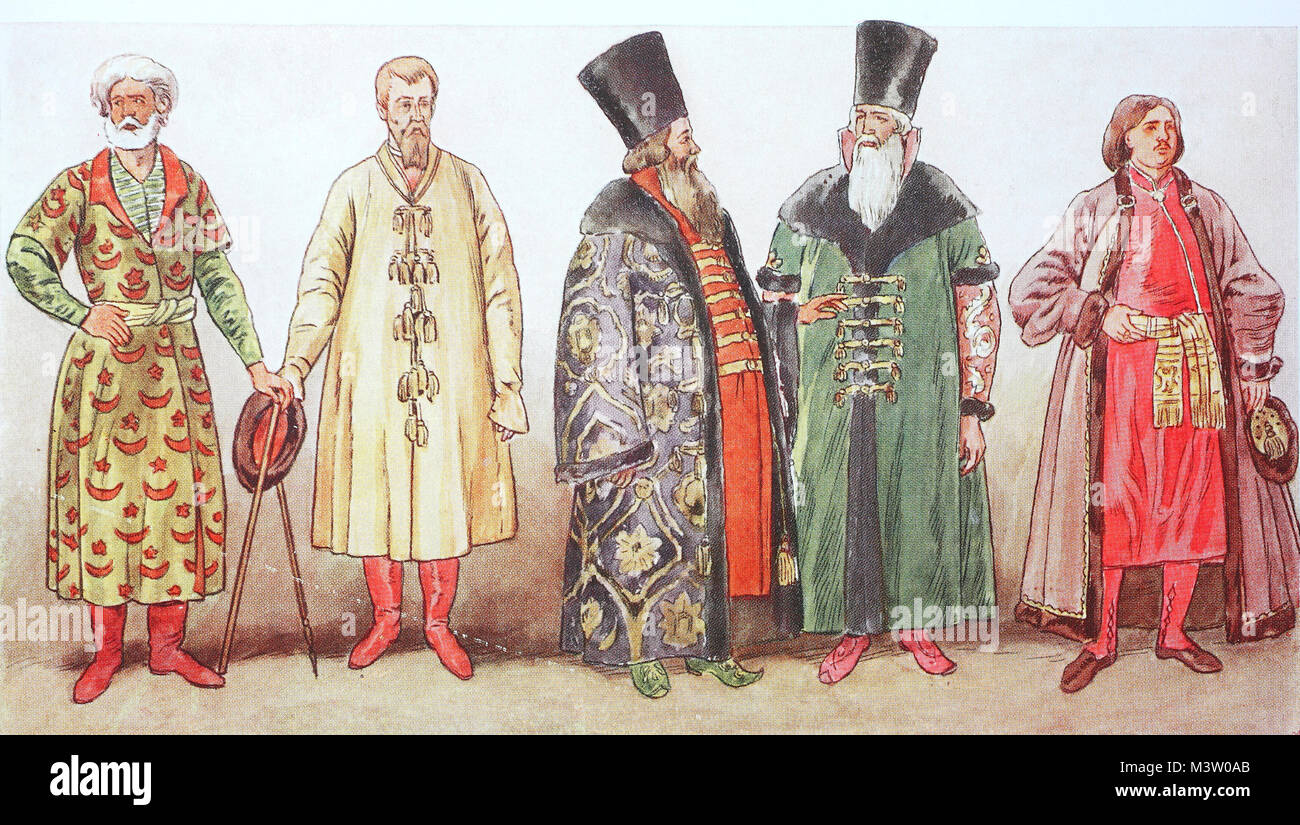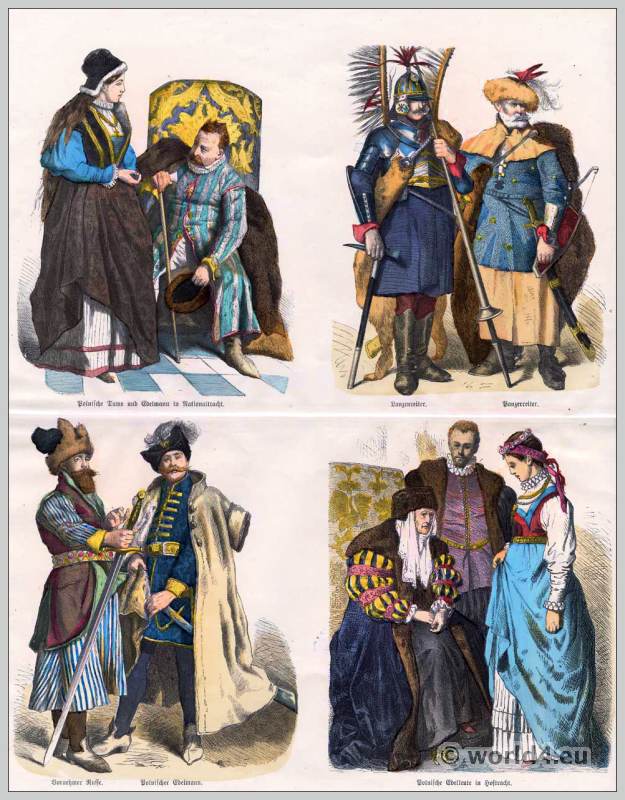
kuntush Russian clothing, Medieval fashion, Fashion
Medieval and Early Modern Russia and Ukraine. at the University of Washington (Seattle) Life in 13th Century Novgorod by Gregory William Frux. Birka Traders Viking, Byzantine and Rus goods from Australia. Miklagard - an impressive group of reeneactors from the New Varangian Guard. Christobel's and Peter's page.

Pin by Alice Sheeler on Women Beauty Ideas Medieval princess, Russian princess, Medieval fashion
Medieval Russian fashion was heavily influenced by the Byzantine and Mongol Empires, featuring long, flowing garments, rich embroidery, intricate headpieces, vibrant colors symbolizing wealth and power, luxurious fabrics like silk and velvet, and ornate accessories such as fur hats and beaded jewelry; it differed from European styles of the time.

Russian costumes. Tsar, Boyar, Belorussian garb. Costume History
The Armorial Hall of the Winter Palace (detail). A. Ladurner (1834) Russian court dress was a special regulated style of clothing that aristocrats and courtiers at the Russian imperial court in the 19th-20th centuries had to follow. Clothing regulations for courtiers and those invited to the court are typical for most European monarchies, from the 17th century to the present.

50 best Medieval Russian Clothing images on Pinterest Viking garb, Historical clothing and
The fashion trends that held sway over Russian dress were diverse and many, resulting in a rich history of traditional Russian clothing. Historical Background. During the medieval era in Western Europe, Eastern Europe was a series of isolated territories in which power and control changed hands often. Russia was one of these terrritories.

Fashion, clothes in Russia in the 16th 17th century, from the left, a boyar in field dress in
For commoners, it was made of cotton or linen, while wealthy ladies had them made of silk. Women's shirts were always floor-length. Young girls had them richly embroidered. Even if the designs.

Pin by Velzevoula Angie on Character Inspiration. Historical dresses, Medieval fashion
Researchers of medieval Russian clothing have long since turned their attention to the fact that clothing of the pre-Mongol period was trimmed with various forms of ribbon (Prokhorov, V.A., 1881, pp. 67, 76-77; Rzhiga, V.F., 1932, p. 54). Among the archeological samples of fabric in the State Historical Museum, a large quantity is composed of.

Pin on Stuff I like
Russian medieval armor, known for its intricate design and remarkable craftsmanship, holds a significant place in the history of warfare. From the iconic suits of armor worn by knights to the unique helmets and shields adorned with elaborate engravings, these pieces not only provided protection but also reflected the artistic sensibilities of their creators.

Pin by Casey on Scadian Fashion, Russian fashion, Medieval fashion
In medieval Russia, traditional men's clothing was largely the same throughout the country. It typically included pants, a shirt, a hat, and a belt. While women had the ability to embellish their everyday attire, men's traditional clothing was known for its simplicity.

Polish and Russian costumes 16th century.
Fun Videos about Late Medieval Russian Clothing. I recently came across these videos posted on YouTube by the Museums of the Moscow Kremlin, talking about late-medieval (16th-17th….

coisasdetere A Noiva… Rússia. Medieval Costume, Folk Costume, Costumes, Russian Beauty, Russian
A major component of Russian clothing since ancient times has been pants and shirts, preserved to modern day almost unchanged. After the Tatar invasion, the opening of the collar, located in medieval Russia in the center of the chest, moved to the left side (the so-called kosovorotka), and shirts which previously extended to the knee became.

Slava Zaitsev SS2016 Street Fashion, Runway Fashion, Mode Russe, House Clothes, Moz, Russian
RUSSIA: HISTORY OF DRESSThe systematic study of the history of dress in Russia began in 1832 with the publication of a book by the president of the Academy of Arts, Aleksei Nikolaevich Olenin (1763-1843). The occasion for the writing of this book was a decree of the Emperor Nicholas I, who expressed the desire to see a painting with many figures on the theme of the most important event in.

Pin on Medieval Russian Clothing
Color: The clothing of Rus was very colorful. The raw color of unbleached linen predominated in peasant clothes. White would appear in various parts of the costume. Linen could be dyed, especially if intended for the nobility, and called "krashenin". Colors included blue, green and red.

_YYTZL7t9uk.jpg (723×1280) Russian clothing, Medieval fashion, Historical dresses
The traditional Russian costume used to be a part of the country's history up until the beginning of the eighteenth century, when Peter the Great proclaimed the Russian dress to be 'peasant and non progressive'. He introduced a law that fined anyone who entered the city in traditional national clothes, as well as anyone with a beard.The citizens, aristocracy, merchants and other.

Moscovite era Historical Costume, Historical Clothing, Traditional Fashion, Traditional Dresses
Browse 973 medieval russian clothing photos and images available, or start a new search to explore more photos and images. Browse Getty Images' premium collection of high-quality, authentic Medieval Russian Clothing stock photos, royalty-free images, and pictures.

Russian Beauty, Russian Fashion, Medieval Costume, Folk Costume, Scandinavian Dress, Skier, Folk
The scarf or traditional headdress was a mandatory element of the peasant outfit. On display are outfits originating from several distinct areas in northern, southern and central Russia. Russian traditional dress began to develop as a specific form in the 9th century. Until the early 18th century, peasants and boyars (noblemen) wore traditional.

Новости Этнические наряды, Костюм, Исторические костюмы
An unexpected rabbit-hole. If you asked me a year ago what I would do for Athenaeum this year, I would have told you I was going to build on last year's project (his-and-hers Italian and French garb for the year 1385).I barely had enough time to get the clothing assembled and ready to wear, but I didn't get to the fancy bits: embroidery, applique, trim….